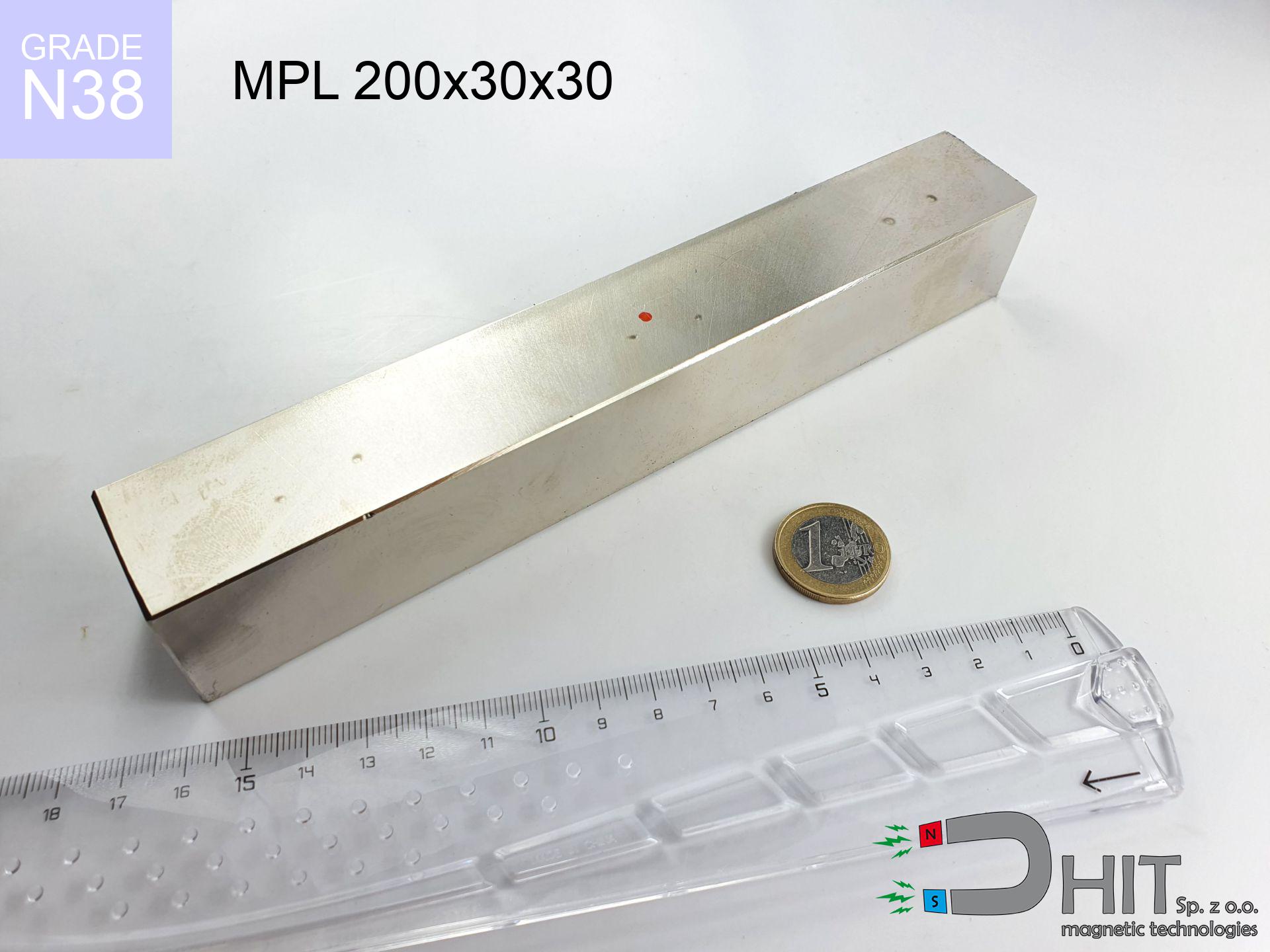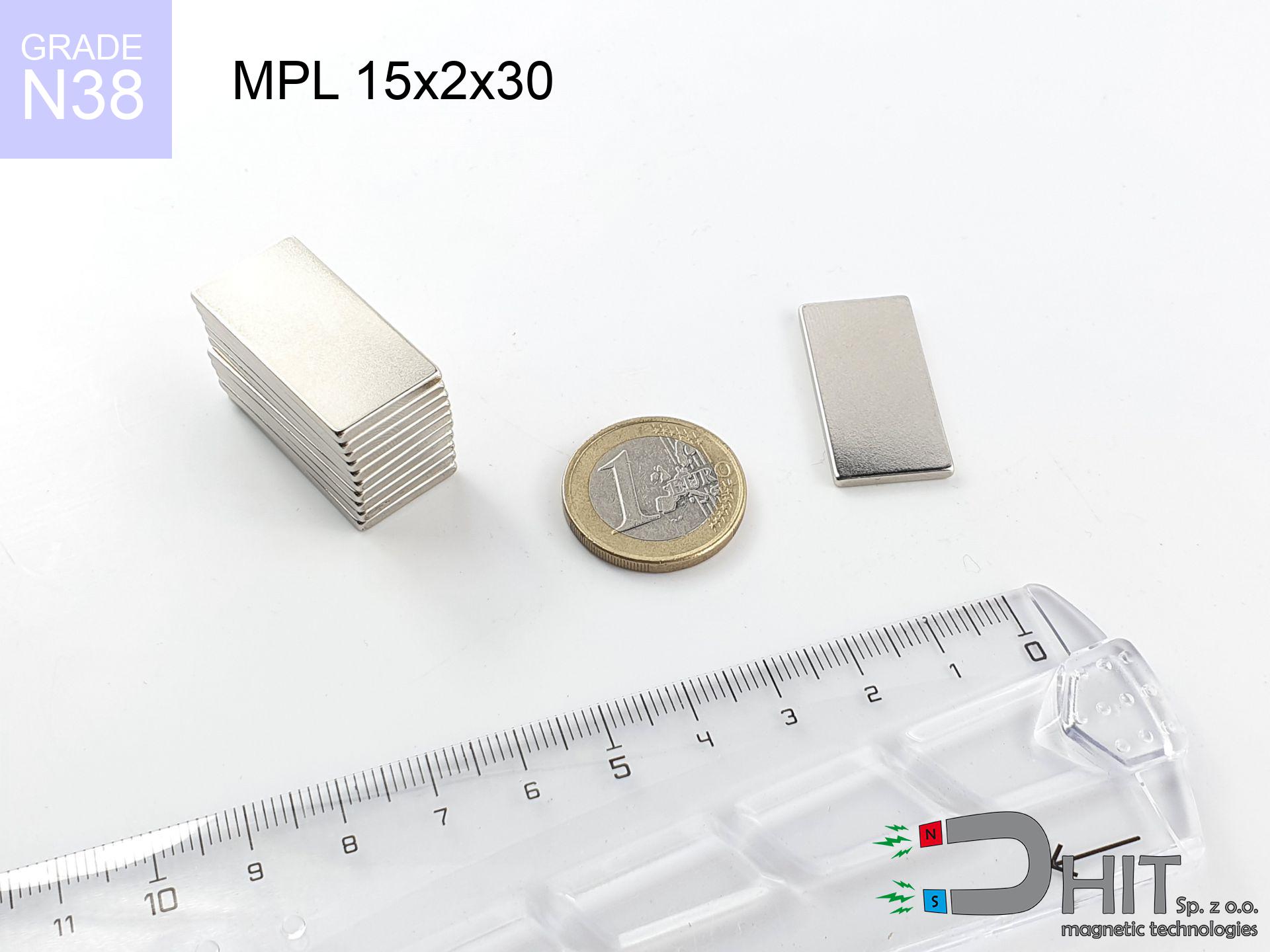HH 36x7.5 [M6] / N38 - through hole magnetic holder
through hole magnetic holder
Catalog no 370479
GTIN/EAN: 5906301814894
Diameter Ø
36 mm [±1 mm]
Height
7.5 mm [±1 mm]
Weight
36 g
Magnetization Direction
↑ axial
Load capacity
26.00 kg / 254.97 N
Coating
[NiCuNi] Nickel
38.90 ZŁ with VAT / pcs + price for transport
31.63 ZŁ net + 23% VAT / pcs
bulk discounts:
Need more?
Give us a call
+48 888 99 98 98
otherwise contact us using
inquiry form
our website.
Specifications along with structure of magnetic components can be tested with our
magnetic mass calculator.
Orders submitted before 14:00 will be dispatched today!
Technical - HH 36x7.5 [M6] / N38 - through hole magnetic holder
Specification / characteristics - HH 36x7.5 [M6] / N38 - through hole magnetic holder
| properties | values |
|---|---|
| Cat. no. | 370479 |
| GTIN/EAN | 5906301814894 |
| Production/Distribution | Dhit sp. z o.o. |
| Country of origin | Poland / China / Germany |
| Customs code | 85059029 |
| Diameter Ø | 36 mm [±1 mm] |
| Height | 7.5 mm [±1 mm] |
| Weight | 36 g |
| Magnetization Direction | ↑ axial |
| Load capacity ~ ? | 26.00 kg / 254.97 N |
| Coating | [NiCuNi] Nickel |
| Manufacturing Tolerance | ±1 mm |
Magnetic properties of material N38
| properties | values | units |
|---|---|---|
| remenance Br [min. - max.] ? | 12.2-12.6 | kGs |
| remenance Br [min. - max.] ? | 1220-1260 | mT |
| coercivity bHc ? | 10.8-11.5 | kOe |
| coercivity bHc ? | 860-915 | kA/m |
| actual internal force iHc | ≥ 12 | kOe |
| actual internal force iHc | ≥ 955 | kA/m |
| energy density [min. - max.] ? | 36-38 | BH max MGOe |
| energy density [min. - max.] ? | 287-303 | BH max KJ/m |
| max. temperature ? | ≤ 80 | °C |
Physical properties of sintered neodymium magnets Nd2Fe14B at 20°C
| properties | values | units |
|---|---|---|
| Vickers hardness | ≥550 | Hv |
| Density | ≥7.4 | g/cm3 |
| Curie Temperature TC | 312 - 380 | °C |
| Curie Temperature TF | 593 - 716 | °F |
| Specific resistance | 150 | μΩ⋅cm |
| Bending strength | 250 | MPa |
| Compressive strength | 1000~1100 | MPa |
| Thermal expansion parallel (∥) to orientation (M) | (3-4) x 10-6 | °C-1 |
| Thermal expansion perpendicular (⊥) to orientation (M) | -(1-3) x 10-6 | °C-1 |
| Young's modulus | 1.7 x 104 | kg/mm² |
Material specification
| iron (Fe) | 64% – 68% |
| neodymium (Nd) | 29% – 32% |
| boron (B) | 1.1% – 1.2% |
| dysprosium (Dy) | 0.5% – 2.0% |
| coating (Ni-Cu-Ni) | < 0.05% |
Ecology and recycling (GPSR)
| recyclability (EoL) | 100% |
| recycled raw materials | ~10% (pre-cons) |
| carbon footprint | low / zredukowany |
| waste code (EWC) | 16 02 16 |
Other offers
Strengths and weaknesses of neodymium magnets.
Benefits
- They do not lose strength, even during around 10 years – the drop in power is only ~1% (based on measurements),
- Neodymium magnets are extremely resistant to loss of magnetic properties caused by external interference,
- Thanks to the shimmering finish, the layer of nickel, gold-plated, or silver gives an aesthetic appearance,
- Magnetic induction on the working part of the magnet remains exceptional,
- Neodymium magnets are characterized by very high magnetic induction on the magnet surface and are able to act (depending on the form) even at a temperature of 230°C or more...
- Thanks to the ability of accurate shaping and customization to individualized requirements, neodymium magnets can be modeled in a wide range of forms and dimensions, which increases their versatility,
- Universal use in electronics industry – they are utilized in mass storage devices, electromotive mechanisms, diagnostic systems, and multitasking production systems.
- Compactness – despite small sizes they offer powerful magnetic field, making them ideal for precision applications
Cons
- Brittleness is one of their disadvantages. Upon intense impact they can break. We advise keeping them in a steel housing, which not only protects them against impacts but also increases their durability
- We warn that neodymium magnets can reduce their power at high temperatures. To prevent this, we advise our specialized [AH] magnets, which work effectively even at 230°C.
- They rust in a humid environment - during use outdoors we recommend using waterproof magnets e.g. in rubber, plastic
- Limited ability of creating threads in the magnet and complicated forms - recommended is a housing - mounting mechanism.
- Health risk related to microscopic parts of magnets pose a threat, in case of ingestion, which is particularly important in the aspect of protecting the youngest. It is also worth noting that tiny parts of these magnets can disrupt the diagnostic process medical after entering the body.
- With large orders the cost of neodymium magnets can be a barrier,
Holding force characteristics
Breakaway strength of the magnet in ideal conditions – what it depends on?
- with the contact of a sheet made of special test steel, ensuring maximum field concentration
- possessing a massiveness of at least 10 mm to ensure full flux closure
- with a plane cleaned and smooth
- under conditions of ideal adhesion (metal-to-metal)
- during detachment in a direction perpendicular to the plane
- at room temperature
What influences lifting capacity in practice
- Space between magnet and steel – every millimeter of distance (caused e.g. by veneer or dirt) diminishes the magnet efficiency, often by half at just 0.5 mm.
- Load vector – highest force is reached only during pulling at a 90° angle. The shear force of the magnet along the plate is typically several times lower (approx. 1/5 of the lifting capacity).
- Metal thickness – the thinner the sheet, the weaker the hold. Magnetic flux penetrates through instead of converting into lifting capacity.
- Material composition – different alloys attracts identically. High carbon content worsen the attraction effect.
- Base smoothness – the smoother and more polished the surface, the better the adhesion and higher the lifting capacity. Roughness creates an air distance.
- Thermal factor – high temperature reduces pulling force. Exceeding the limit temperature can permanently damage the magnet.
Holding force was checked on a smooth steel plate of 20 mm thickness, when the force acted perpendicularly, whereas under parallel forces the lifting capacity is smaller. Additionally, even a slight gap between the magnet’s surface and the plate decreases the lifting capacity.
Precautions when working with neodymium magnets
Threat to electronics
Very strong magnetic fields can erase data on credit cards, HDDs, and other magnetic media. Stay away of min. 10 cm.
Phone sensors
Navigation devices and smartphones are extremely susceptible to magnetism. Close proximity with a strong magnet can decalibrate the internal compass in your phone.
Crushing force
Large magnets can break fingers instantly. Under no circumstances put your hand between two attracting surfaces.
Warning for allergy sufferers
Studies show that the nickel plating (the usual finish) is a strong allergen. For allergy sufferers, avoid touching magnets with bare hands and choose versions in plastic housing.
Heat sensitivity
Watch the temperature. Exposing the magnet to high heat will ruin its magnetic structure and strength.
Fire risk
Dust generated during grinding of magnets is flammable. Avoid drilling into magnets unless you are an expert.
Swallowing risk
Strictly keep magnets out of reach of children. Risk of swallowing is significant, and the consequences of magnets clamping inside the body are fatal.
Magnet fragility
Neodymium magnets are ceramic materials, which means they are fragile like glass. Collision of two magnets will cause them shattering into shards.
Handling rules
Be careful. Neodymium magnets attract from a long distance and snap with massive power, often faster than you can move away.
Pacemakers
Warning for patients: Powerful magnets affect electronics. Maintain minimum 30 cm distance or ask another person to work with the magnets.

![Magnet with hole HH 36x7.5 [M6] / N38 Magnet with hole HH 36x7.5 [M6] / N38](https://cdn3.dhit.pl/graphics/banners/magnet.webp)
![HH 36x7.5 [M6] / N38 - through hole magnetic holder](https://cdn3.dhit.pl/graphics/products/hh-36x7.5-m6-bez.jpg)





